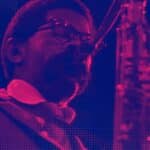As a musician you know should be learning tunes…After all it’s the backbone of how you play with other musicians, speak the language, and share your musical ideas.
But, the big question is: How exactly should you go about doing this?
Right now you might be wondering this as you work to build your repertoire in the practice room. Should you just try to quickly memorize as many tunes as you can? Can you just read them on the gig? Should you try to learn them from records?
On one hand information is just information, right? It doesn’t matter how you get it – a leadsheet, a recording, from an app, or a friend telling you the chords – just absorb the details and move on.
But is learning a tune ever more than simply learning the information of a tune?
More specifically, are there other things that happen in your learning process that can help or hinder your musicianship??
The answer is yes! And it happens when you learn a tune by ear.
The truth is, many of the more esoteric musical skills like getting “better” ears, musical phrasing, or melodic development aren’t learned from separate etudes or exercises, rather they’re the byproducts of the activities we are doing everyday as we interact with the music.
And a vital area where this happens lies in learning repertoire by ear.
Below we’ll show you exactly why you should start learning tunes by ear, 5 essential things that happens when you do, and why it’s way more beneficial than simply reading the notes off of the page.
Let’s get started…
1. Your ear is tested & improves

You head into the practice room and turn on a recording…suddenly melodies, chords, bass notes, and rhythms start streaming out into the air.
Now what?
This situation gets to the heart of what being an improvising musician is all about – dealing directly with the music and understanding what is happening.
More importantly it’s a test for your ear. No cheat sheet. No easy answers. You’re forced to deal with the sound and figure it out. This is exactly where your ear will improve the most.
And it all goes back to a specific type of ear training…
The 2 Sides of Training Your Ear
It’s important to understand that there are two steps involved in the process of improving your ears… there’s the “homework” of ear training where you ingrain specific musical concepts.
And then there’s the “application” of your ear training skills where you put your skills to the test in the real world.
…if you want to be a complete musician you need both in your routine.
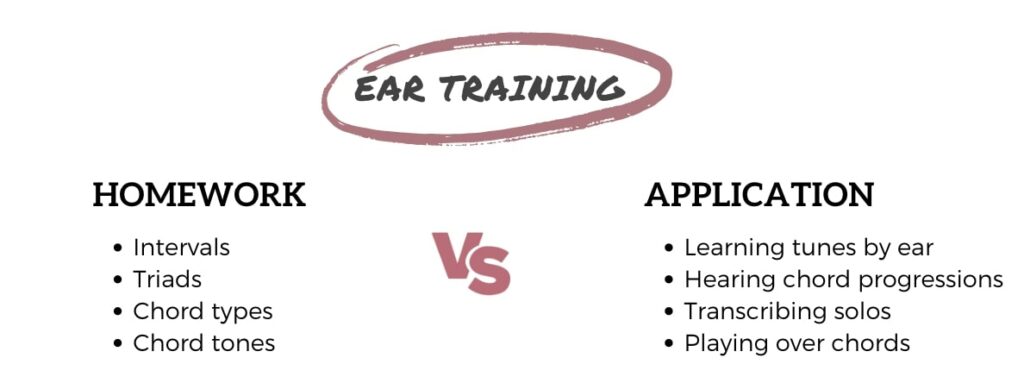
It’s in those moments when you have to figure out a chord, a melodic line, a bass note, play over a progression, or learn a tune where your skills are challenged.
To improve, you need to continually be working in this “application” phase. And as you’ve probably guessed, one of the best ways to do this is learning tunes by ear.
It will be tricky and time consuming at first, but remember, struggle is a necessary part of the improvement journey.
The process of starting in the unknown and working your way to discovery and ultimately understanding is what will ingrain these tunes on a personal level.

We all want better ears, and learning by ear is a great way to get there!
2. You Begin to think in Sound
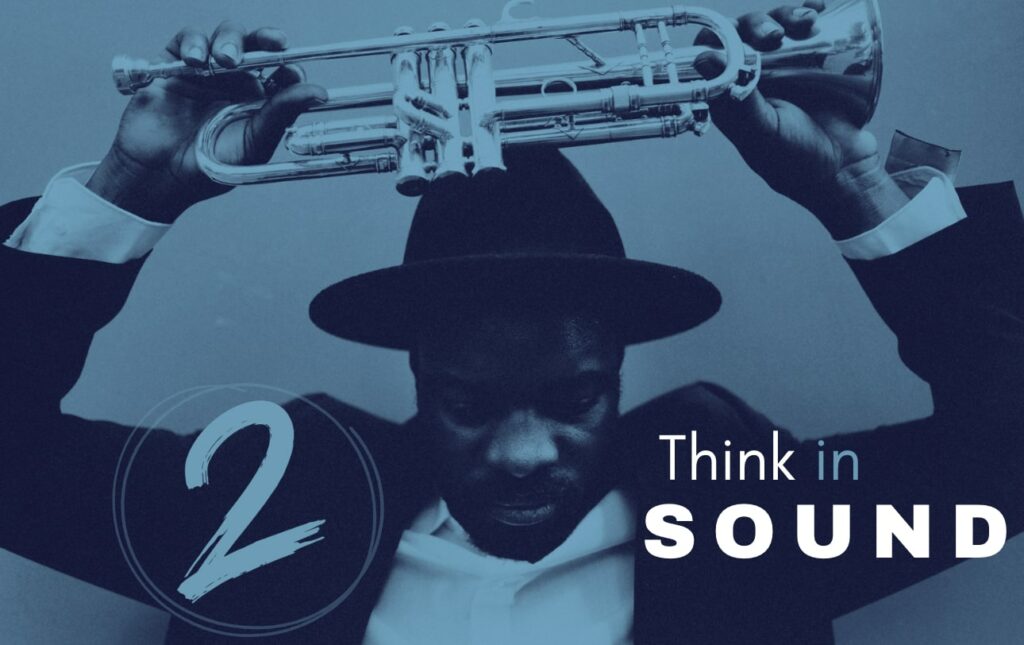
“Hey, do you know this tune?”
This common question that you get asked as a musician in lessons, at jam sessions, and in rehearsals with friends…
And for many players the immediate first thought is: What key is it in? What’s the first chord? What scale can I use? What are the notes of the melody?
This is exactly where we can get into trouble…
In order to access the music, play a tune, or improvise we first have to think of music theory concepts. It’s as if there’s a mental barrier between you and the actual sound of the music.

And it goes back to the way we’re learning tunes and ingraining musical information in the practice room. If you always learn tunes, jazz chords, or solos from a leadsheet, you’ll always have that separation between you and the sound of the music.
So how do you break the cycle??
Well, the obvious answer is to stop relying solely on written information and to start interacting directly with the sound of the music on a daily basis.
When you do this, a transformation will occur – you’ll begin to conceive of or think of music in sound. For instance:
- Melodies will change from groups of random notes to complete musical statements that you can sing
- Chord symbols and progressions will transform into distinctive sounds that you recognize and eventually hear melodies over
- And tunes will no longer feel like memorization exercises, they’ll become melodic & harmonic stories with distinct qualities and emotions
When you consistently learn by ear, no longer are you hanging onto a note or a scale for dear life. No longer are you relying on a memorized sequence of chords or dealing with mental constructs like chord tones…
You’ve entered the realm of physical sound. And this is the ultimate goal – to deal directly with the music without all the extra mental steps – to actually think and play in sound!
3. get A Lesson in Harmony
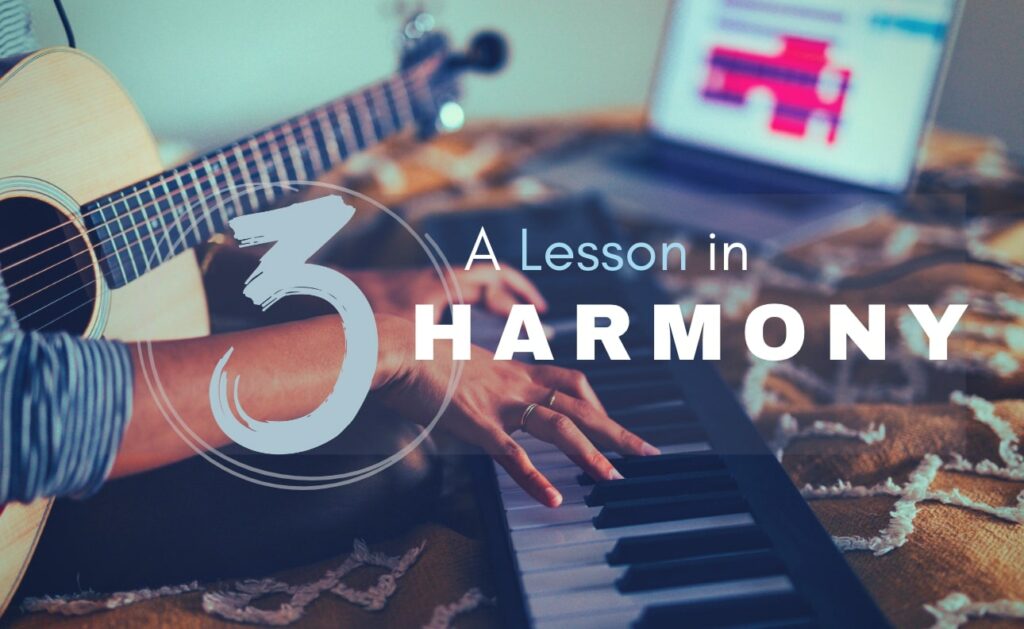
Harmony is one of the fundamental skills you need as a musician…
And one of the best ways to learn the ins and outs of harmony is through the medium of song – specifically, immersing yourself in the tunes of the great American songbook.
However the way you learn a tune is the determining factor in what you’ll get out of it. If you simply take chords from a page without thinking about them, you’ll end up with a sequence of memorized chords.
But if you actually figure them out for yourself, you’ll get a harmonic lesson, uncovering the sound of individual chords and chord relationships, and the movement within a larger key center.
As you listen and absorb the sound of the tune, ask yourself:
- What is the overall key or key centers of the tune?
- Is that sound minor, major, dominant?
- Is it stable or does it transition to another chord?
- How does each chord relate to the larger key?
- How do I make sense of this progression?
This line of thinking will lead you to what we call functional harmony , getting from the building blocks of theory to how harmony is actually used in the real world.
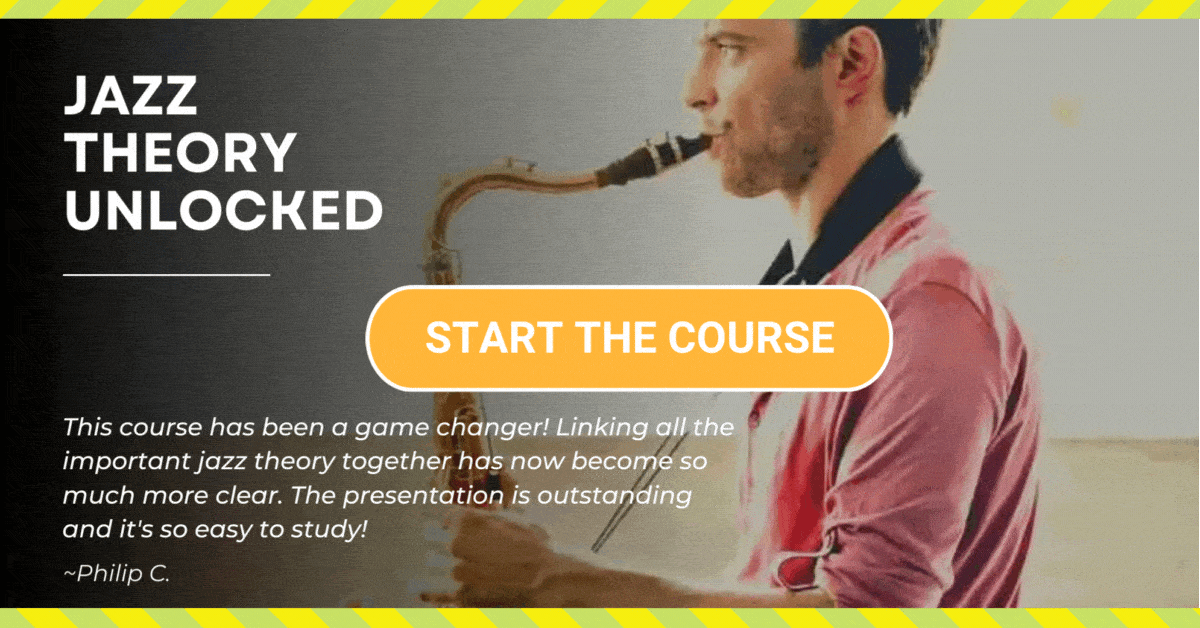
Remember, every tune has a harmonic story – a way that it gets from point A to point B, usually with a unique chord movement that defines the tune. And the way you ingrain this is through the process of discovery…
4. Develop Melodic Skills

Have you ever wondered how the best players come up with melodic ideas?
In your own practice maybe you’re grasping at scales to piece together ideas and other times you just draw a blank.
But what many of us overlook is that the best way to learn melody is to study and ingrain actual composed melodies.
Immersing yourself in the jazz repertoire is a great way to develop your melodic skills, and this is yet another instance of where learning a tune isn’t just learning a tune.
When you learn a tune by ear you are also getting a lesson in the art of melody. Specifically:
- How to make melodic statements vs. using scales and random notes
- Phrasing ideas and tactics
- Melodic devices for specific chord types
- New ideas rather than your “go to” licks
- How to develop themes
- Using simplicity vs. complexity in musical ideas
As you learn a melody, think about what makes it unique. How is it constructed and how does it relate to the underlying chord progression?
By ingraining these melodies in your ear, you are also ingraining dozens of melodic techniques that you can use in your own solos!
5. Absorb the language
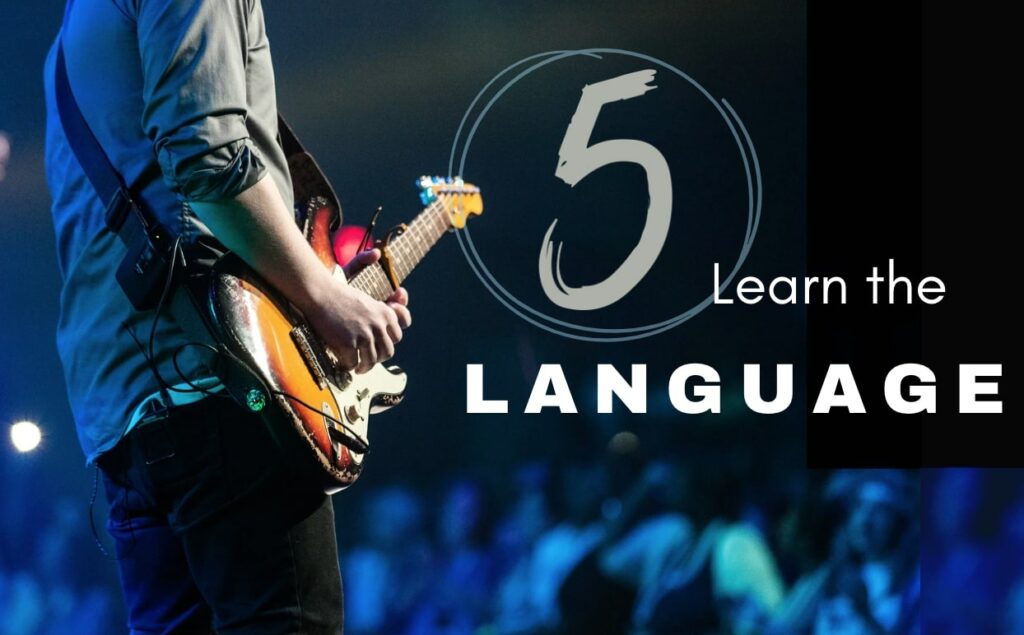
Jazz is a language.
To speak it fluently you need to build a library of sounds, techniques, lines, rhythms, and harmonic & melodic devices that are ingrained in your ear.
And one of the byproducts of learning tunes from records is that you are subconsciously gathering musical techniques.
You see, tunes are full of musical devices…
- Dominant alterations
- Major, minor, V7 lines and techniques
- ii-V-I tactics
- Chord substitutions
Melodic, harmonic and rhythmic ideas that are part of the working vocabulary that all jazz musicians are expected to know.
However, in this case you aren’t learning them as a separate exercise or a theory concept, they are baked into each musical phrase giving you a lesson in the device itself, how to apply it to harmony, and how to employ it in a musical way.
It’s hard to gather this information from the page – you need to hear, to sing it, and to play it to make it a part of your musical vocabulary.
Remember, every melody and every progression that you learn is a piece of living musical language that becomes a part of you!










